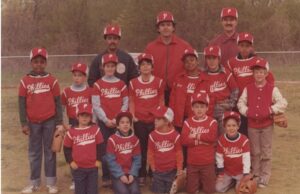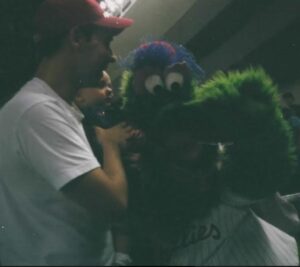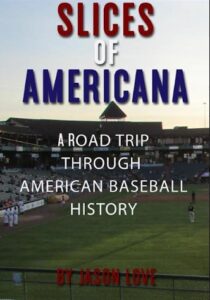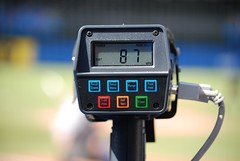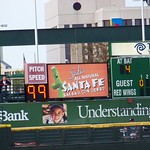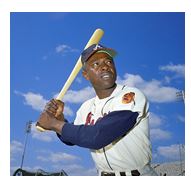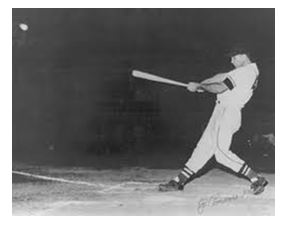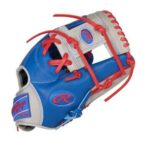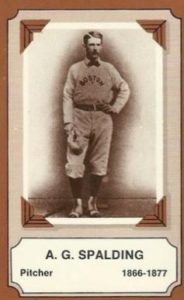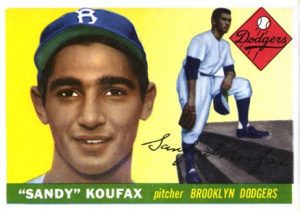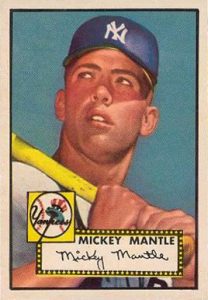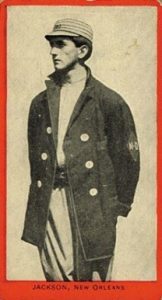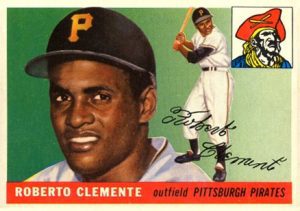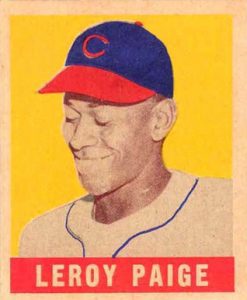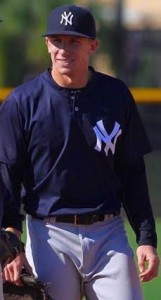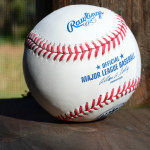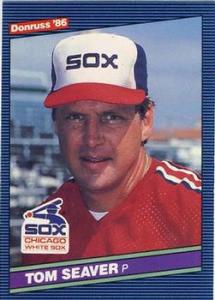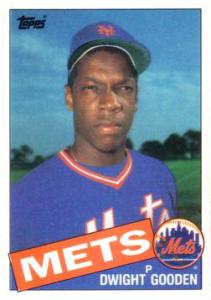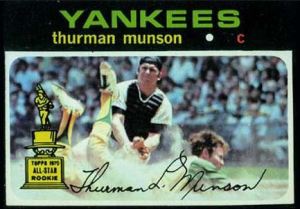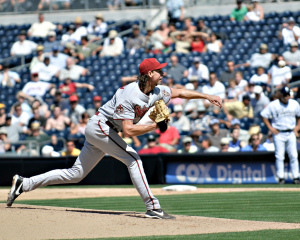 Baseball Roundtable is pleased to present a guest post from former major leaguer John Paciorek, who has spent a lifetime playing and studying the national pastime – and, in particular, the art of hitting a baseball. In this essay, Paciorek offers what he has observed and learned about developing the optimal approach to batsmanship. Before, we get into the essay – a bit about Paciorek.
Baseball Roundtable is pleased to present a guest post from former major leaguer John Paciorek, who has spent a lifetime playing and studying the national pastime – and, in particular, the art of hitting a baseball. In this essay, Paciorek offers what he has observed and learned about developing the optimal approach to batsmanship. Before, we get into the essay – a bit about Paciorek.
John Paciorek’s drive and talent got him onto a major-league field on September 29, 1963 – at the age of 18 – for the Houston Colt .45s (that‘s what they were called then). Paciorek’s passion for the national pastime comes as no surprise, two of his brothers – Jim and Tom Paciorek – also made it to the major leagues. But, back to John’s career. Batting seventh and playing right field, Paciorek had an auspicious debut. In addition to four cleanly handled outfield chances, he racked up five plate appearances, three hits, two walks, four runs scored and three RBI. As surprising as his debut major league performance is the fact that the game also represented Paciorek’s major-league finale. Still, John Paciorek had the most successful one-game MLB career in history (a 1.000 batting average; on-base percentage; slugging percentage; and fielding percentage).
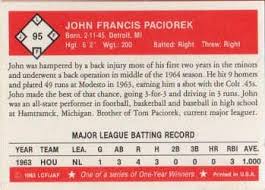 What happened? Paciorek’s major league potential was cut short by a back injury that required surgery in 1964, sidelined him for all of 1965 and limited him to four minor-league seasons going forward. After leaving professional baseball, Paciorek went on to earn a degree in physical education and forged a career as a physical education teacher. But he never lost his passion for – and deep interest in – the intricacies of the game. Paciorek has expressed that passion in (among other ways) the authorship of three baseball-focused books Plato and Socrates – Baseball’s Wisest Fans; The Principle of Baseball – and All There is to Know About Hitting; and If I Only Knew Then What I Know Now. He has also established a baseball-focused website – at JohnPaciorek.com.
What happened? Paciorek’s major league potential was cut short by a back injury that required surgery in 1964, sidelined him for all of 1965 and limited him to four minor-league seasons going forward. After leaving professional baseball, Paciorek went on to earn a degree in physical education and forged a career as a physical education teacher. But he never lost his passion for – and deep interest in – the intricacies of the game. Paciorek has expressed that passion in (among other ways) the authorship of three baseball-focused books Plato and Socrates – Baseball’s Wisest Fans; The Principle of Baseball – and All There is to Know About Hitting; and If I Only Knew Then What I Know Now. He has also established a baseball-focused website – at JohnPaciorek.com.
Now, here is Paciorek’s essay on the art of hitting a pitched ball.
Professional Baseball Batter’s Most Vulnerable Stage
As He/She Is Attempting to Hit A Pitched Ball
By
John F. Paciorek
Since I finished my career in Major League Baseball on the final day of the 1963 season – on a day that I came to the plate five times, walked twice, had three singles, scored four runs, knocked in three (and suddenly became destined to posterity as the only MLB player with two or more at-bats to record a single-season and career batting average and on-base percentage of 1.000) – I have relegated myself to the idea that penultimate “batting proficiency” can be attained even if perfection is inaccessible to all other major-leaguers.
 The circumstances surrounding my “One Game” performance are documented by Steven Wagner in his Book, PERFECT, Baseball’s Greatest One-Game Wonder. To me, the most remarkable thing that I recall from that otherwise wonderful one-game experience is the very fact that I could warrant such acclamation while sporting a batting technique that I have since calibrated as so devoid of practical application that I wonder how I ever made it to the big leagues. Yet, this technique is one that many players still use today and, as a result, are experiencing the same batting inconsistency I normally suffered through during my playing days. I’m now assuming that I was either extremely lucky or it was a work of providence to have such a Perfect Day.
The circumstances surrounding my “One Game” performance are documented by Steven Wagner in his Book, PERFECT, Baseball’s Greatest One-Game Wonder. To me, the most remarkable thing that I recall from that otherwise wonderful one-game experience is the very fact that I could warrant such acclamation while sporting a batting technique that I have since calibrated as so devoid of practical application that I wonder how I ever made it to the big leagues. Yet, this technique is one that many players still use today and, as a result, are experiencing the same batting inconsistency I normally suffered through during my playing days. I’m now assuming that I was either extremely lucky or it was a work of providence to have such a Perfect Day.
Within the last 60 years, I’ve attempted to formulate a practical method by which any aspiring baseball player could simply and logically transcend the gamut of mortal illogical reasoning and the despairing moments of human futility to ascend to a nominal level of batting proficiency. After much study and trial and error, I was able to compile a plethora of valuable information, both metaphysically and scientifically adept, and transpose it in written form to three books and hundreds of essays that comprise the website from which I hoped others could glean.
Mostly every batter, whether an inept amateur, competent sandlot prodigy or a professional of variable regard, is inherently drawn to the instinctive notion that he/she needs to stride into a pitched ball in order to hit it with maximum power, force or efficiency. Even those who realize that a minimum stride is theoretically advantageous to seeing the speeding ball with near optimum acuity seem to still insist on lifting the front foot to initiate an opposing force to the pitcher’s powerful delivery. Thus, the actual point at which the batter is at his MOST DEBILITATING!
I have observed recently two current professional batters who simply lift the heel of the front-foot as the pitch is delivered and vigorously plant it down as the ball reaches the hitting zone, creating a better chance to achieve batting consistency. They are major-leaguer Paul Goldschmidt (St. Louis Cardinals) and minor-leaguer Ben Gobbel (San Bernadino 66ers). Goldschmidt has already established himself as a prominent hitter in the major leagues, well regarded for the consistency he has demonstrated over his tenure. But he is by no means perfect nor an example of a Penultimate Batter. Gobbel has just recently changed his technique from that of a slight stride to that of “heel-lift” and his college batting prowess caught the attention of the Anaheim Angels who offered him a minor-league contract to play in the California League this year. He had been showing great potential until he recently broke his left hand by a pitched ball.
Both Goldschmidt and Gobbel (as well as most hitters) understand that, in order to hit a pitched ball effectively in professional baseball, a batter must see it with maximum acuity. Unfortunately, even professional major leaguers do not understand that any movement of the head and eyes diminishes the capacity for “Maximum-Acuity.” In addition, the conscious thought of simply raising the “front heel” expends energy that deprives the batter of optimal “focus” on the pitched ball.
Although Gobbel and Goldschmidt are on the right track in securing batting prowess, they are not altogether on the highest level for experiencing batting perfection. Both would do well if they would copy the batting technique of the greatest hitter in baseball history (besides me – just kidding) – Barry Bonds!

Photo: Kevin Rushforth, CC BY-SA 2.0 <https://creativecommons.org/licenses/by-sa/2.0>, via Wikimedia Commons
I picture Barry Bonds in the batter’s box and wonder why more (if not all) batters didn’t try to emulate the technique he brought to the plate? His .370 average (2002) was an understatement of his potential (even with his “senior citizen” status). One of the only things that kept him from hitting 100 home runs and averaging over .400 was the despicable tendency of pitchers who avoided throwing to him.
I don’t know how good an athlete has to be to attain the status of consistent performer. But he shouldn’t have to be an Einstein to figure out (from video replays) what it is that Barry Bonds did differently from all other batters. Each, or any of them, could possibly translate that information into a means to eliminate the margins of error that he unwittingly employed. Most players must think that Bonds was an anomaly and could not be duplicated in strength and natural ability (besides the steroid controversy).
It was neither strength nor natural ability which allowed Barry to stand out as the greatest exponent of batting excellence the national pastime has ever seen. It was his masterful application of the basic fundamentals of batting principles that afforded him the facility to approach impeccable batting technique and execution. He was the only hitter who came to the plate, and looked as though he should get a hit every time he swung his bat.
What was it that Barry did consistently right, that most, if not all, other batters do only sporadically? The answer is five separate things:
- He established a strong low center of gravity while waiting for the ball.
- He eliminated movement of his head and eyes. (Only slightest of strides … No-stride would’ve been even better.)
- He waited patiently for the ball to get to him, while he quietly lowered his hands to begin an unobtrusive rhythm of his arms.
- When the ball got to his hitting zone, four things happened simultaneously:a.
- The front foot planted quickly and firmly – at a 120-degree angle to the pitcher
- Front shoulder “shrugged” upward, while back shoulder and elbow drove downward (hands staying behind back shoulder and resenting a flat bat as the body was turning to address the pitched ball)
- Back bent knee drove forward, allowing the hips to turn rapidly with a straightening front leg
- The shoulders followed the hips in rapid succession, arms extending through the contact of the ball.
- From contact, through the straightening of arms, through the follow-through, the shoulders were continuously flowing, until they had reversed positions.
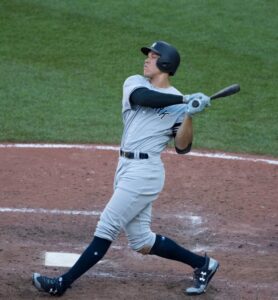
Photo: Keith Allison from Hanover, MD, USA, CC BY-SA 2.0 <https://creativecommons.org/licenses/by-sa/2.0>, via Wikimedia Commons
The only player capable of superseding Bonds in batting efficiency is Aaron Judge, if he would change a few minor things in his batting technique. Because of his natural overpowering strength, Judge doesn’t need to stride. So, he should merely assume a stance wherein he does not have to stride, but rather simply push down onto his front foot from a stable bent-knee position to begin his swing. When he pushes down, his front foot should be pointed at 120 degrees toward the pitcher. By doing this, he will avoid twisting his ankle and knee as the weight will be distributed evenly onto his foot and leg as did Ted Williams and Joe DiMaggio. If Judge continues in his current stance and approach to the ball, he will never surpass Barry as the greatest batter ever!
Like Judge, both Gobbel and Goldschmidt address the pitcher with both feet parallel and toes pointed toward the plate. When they plant the front foot as the heel comes down, they inadvertently strain the ankle and knee as they commence with their powerful swings.
With regard to Goldschmidt and Gobbel, with their feet perpendicular to the plate through their swings, they never express their full power because their ankles are twisted, and foot not fully planted. When Judge takes a full swing, you can always see his front ankle twisted almost to the point of spraining.
For a detailed analysis of Judge’s batting stance and stride,click here.
The best pre-condition for these three hitters (as well as ALL batters) is to assume a “Bonds-like” batting stance (low and stable) with front foot pointed at 120 degrees toward the pitcher, after they have spread their legs and feet to a distance equal to what would be their normal strides. Their hands and bat should be at a position no higher than what is considered a high strike. (In Little League right on up to the major leagues, when the hands are up too high, the batter has a tendency to see the high pitch too clearly and with the hands and bat at that position, they can’t stop themselves from swinging at it.)
A pitcher’s most consistent “out-pitch” with two strikes on a batter with hands high is a high fastball above the strike-zone. The main reason a batter misses the high pitch is that when he begins his swing from a high position, his power muscles of “lats and pecs” naturally drive the arms and bat down under the ball. If the arms and bat begin at the high strike, it is easier for an adept “swinger of the bat” to adjust his thinking as well as his bat-control to the non-strike, while still remaining competent in hitting the high pitch within the zone.
Following these instructions is made easier if the batter can manage to contain his primal instinct to stride after a pitched ball. With the “No-Stride,” all the batter has to do has to do is WAIT, BE READY, PUSH DOWN on front foot and explode with extreme intensity by way of the correct mechanical employment of his legs, hips, shoulders, arms, and hands at the ball that he sees most clearly making its way into his striking zone. Thus, it takes away the mental strain of wondering when to “Put the front foot down”!
For any more information about the only sure way of becoming as close to a Perfect Batter in the Big-Leagues, as well as in all lower levels of Baseball, please consult my website at www.johnpaciorek.com.
Baseball Roundtable – Blogging Baseball Since 2012.

 Baseball Roundtable is on the Feedspot list of the Top 100 Baseball Blogs. To see the full list, click here.
Baseball Roundtable is on the Feedspot list of the Top 100 Baseball Blogs. To see the full list, click here.
Baseball Roundtable is also on the Anytime Baseball Supply Top 66 Baseball Sites list. For the full list, click here.
I tweet (on X) baseball @DavidBaseballRT
Follow Baseball Roundtable’s Facebook Page here. Find More baseball commentary; blog post notifications; PRIZES.
Member: Society for American Baseball Research (SABR); Negro Leagues Baseball Museum; The Baseball Reliquary.





